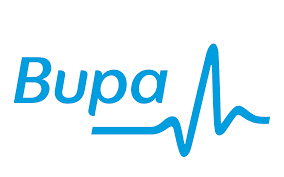Common Sports and Running Injuries:

Do you suffer from the following common running injuries?
Runners knee, shin splints, plantar fasciitis or DOMS. Most runners will experience some form of
running related injury at some point. These are the usual suspects!
This post will describe the causes of injuries and some ideas for treatment and prevention.
Origins
Running injuries are common, especially in beginners or those increasing their mileage. PFPS
(Patello- Femoral Pain Syndrome) can emerge from muscle imbalances which may be result
of postural problems, past injuries or improper training methods. The cause of PFPS originates
from issues related to movement or degeneration of the patella (knee cap); Instead of sliding
smoothly, the knee cap moves incorrectly causing friction and irritation on its underside. This increased
friction leads to inflammation and pain.

Shin splints are not exclusive to runners. They are the most common injury present in new running enthusiasts. Shin splints are also known as MTSS
(Medial Tibial Stress Syndrome). This is caused by inflammation to a membrane that covers the front of a shinbone (periosteum). In runners it is
most likely to occur due to overuse, when the running distance has been significantly increased and the body cannot cope with the overload.
Additionally, running long distances, being overweight or having flat feet increases chances of MTSS

Plantar fasciitis is characterised by inflammation or microtrauma of the tissues on the sole of the foot. It results in high levels of pain in the heel and sole of
the foot. Plantar fasciitis may be caused by overuse or too much training. There is often thought to be a contribution of biomechanical strain due to dysfunction of
the foot and ankle. If left untreated plantar fasciitis can last for prolonged periods and may even become persistent.
DOMS or delayed onset of muscular soreness is a normal physiologic result of working your muscles past
their normal capacity; It is therefore common after running or using the gym. It is thought to be a result
of micro trauma to the muscle after it has been exercised. DOMS is normally felt as a dull heavy ache
in your legs, it may be painful when you sit and or move around.
To sum up: most sports injury occurs due to weakened and or overused muscles. These
are normally preventable and treatable.
What treatment are available to help:

* Manual therapy: Sports massage, physiotherapy,
osteopathy, chiropractic etc.
* Self massage techniques: Including foam roller and
stretching.
* Cryotherapy and heat therapy: Hot and cold treatments – ice bath, heat packs after exercise.
* Medical treatments: Paracetamol, Anti-inflammatories, Cortico-steroid injections
* Orthotics: Shoe inserts to help improve foot biomechanics.
Prevention is better than cure. Be proactive instead of reactive?
Professional athletes have a team of therapists looking after their bodies. Their aim is to keep
joints and muscles in tip top shape by reducing the strain on over-worked muscles, strengthening
weak muscles, improving joint range of motion and enabling fast recovery. Massage therapists are an
essential part of an athletes background team. If you’re training regularly, however spend the rest of
your time behind a desk or in a sedentary occupation, your body will benefit from additional help such
as sports massage.
So, what are your goals?
∗ To run faster and or longer, and to minimise the risk of injury.
∗ To speed up recovery time after running or racing.
∗ To have a peace of mind. Knowing that your body is ready
and prepared.
What is sports massage?
This type of massage aims to treat particular muscle groups and tissue structures which have become
shortened, tightened, overused and otherwise painful. Sessions usually take place in between training or
running.
Benefits of regular massage treatment may include:
∗ Loosen tightness within soft tissues
∗ Improve blood flow and lymphatic drainage
∗ Improve performance
∗ Prevent injury
A variety of techniques are used to provide the best results including; deep tissue massage work,
trigger point therapy, muscle energy technique, joint mobilisation and specific prescribed stretches and
strengthening exercises to maintain progress. Frequency of treatment depends on training schedule
and intensity, occupational strain and stresses, genetic predisposition to muscle tightness. However
typically a professional athlete will probably receive massage weekly (or more frequently) whereas
amateur and weekend warriors may be more suited to a monthly massage.
Typical session last either 30 minutes or an hour and follows a specific program designed for your
needs.
If you would like further information as to how sports massage may help you; just call
Freedom Clinics and ask to speak to one of our experienced sports massage therapists.
References:
Tortora, Grabowski, “Principles of Anatomy and Physiology 9th Edition”
NHS choices “Knee pain and other running injuries”
http://www.nhs.uk/Livewell/c25k/Pages/running-injuries.aspx
Bhavesh Joshi “The lowdown on sports massage”
http://www.runnersworld.co.uk/beating-injury/the-lowdown-on-sports-massage/9557.html
All of my drawings are based on Muscle Premium Visible Body version 4.3






